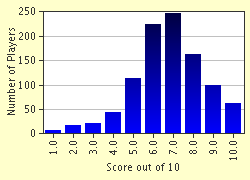Quiz Answer Key and Fun Facts
1. The formula for Ohm's law is correctly expressed as which of the following?
2. Which of the following sentences best expresses Ohm's law?
3. When writing a formula, resistance is expressed in ohms. What symbol is used for this unit?
4. Georg Ohm gave his name to the unit of electrical resistance. What are the first names of the men after whom other important properties of capacitance and inductance are named?
5. The inverse of an ohm was once commonly known as a mho. What is the unit of measurement for conductance in today's jargon?
6. The year 1820 was obviously an exciting time to be a physicist. Which of the following is NOT a correct statement about scientists whose discoveries happened around the same time as Ohm's?
7. Resistance, we are told, is futile. A substance with a low resistance to the flow of electricity is called a CONDUCTOR. What is a substance with a high resistance called?
8. Although most conductive materials obey Ohm's law, some do not and are said to be nonohmic. A diode is an example of a nonohmic conductor. Why don't diodes obey Ohm's law?
9. It's time to use Ohm's law to solve a real problem.
If we have a small circuit consisting of a 10-volt battery and a small light with an impedance of 1 ohm, what is the current?
10. Although it would eventually become "the law", Ohm's elegant theory was not accepted for many years and he suffered both poverty and ridicule.
Who stated: "When a true genius appears in this world, you may know him by this sign, that the dunces are all in confederacy against him."?
Source: Author
LilahDeDah
This quiz was reviewed by FunTrivia editor
crisw before going online.
Any errors found in FunTrivia content are routinely corrected through our feedback system.


